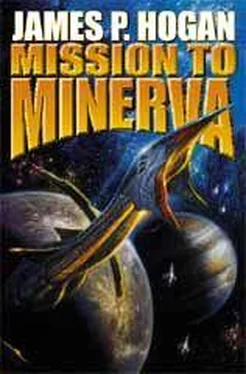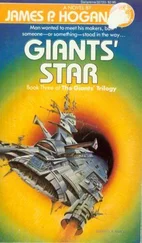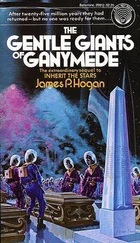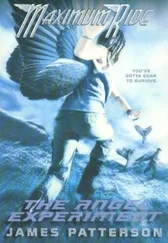And then, the last pictures came back from the probe that had pursued the fleeing Jevlenese spacecraft, showing that they had been hurled across light-years of space and back tens of thousands of years in time to reappear near the planet Minerva in the era of its habitation by the Lunarians, long after the Ganymeans had departed. The proof was there, indisputably, that it had happened. The demonstration that put an abrupt end to any further speculation as to whether such a happening was possible came to be known as the "Minerva event."
***
After the years he had spent as Hunt's boss in some capacity or other, Gregg Caldwell had thought he was past being capable of surprise anymore. Four years previously, in 2028, when the first evidence of the Lunarians was discovered on the Moon in the form of a fifty-thousand-year-old spacesuited corpse, Caldwell, as chief of UNSA's former Navigation and Communications Division, had set the ebullient Englishman the task of unraveling the mystery of where "Charlie" had come from. Exactly what reconstructing pictures of vanished civilizations had to do with the business of navigating UNSA's spacecraft and maintaining its communications around the Solar System was a good question, but Caldwell had always been a compulsive empire builder. His way of going about things was to stake out a claim on getting something done while others debated the demarcation lines, and possession being nine-tenths of the law, like some of the ideas of quantum physics that he had been hearing lately, he created what became reality. Hunt, along with his biologist partner-in-crime, Christian Danchekker, who now directed the Alien Life Sciences Division, had responded by causing the story of human origins to be rewritten from its beginnings. When Caldwell sent the pair of them to Jupiter to look into some relics of long-vanished aliens that came to light shortly afterward on Ganymede, they came back with a starship full of live ones. Despatched to Jevelen to help pinpoint the source of mass mental derangement among the natives, they turned up an entire functioning universe evolved out of data structures inside a planet-size computer. But this latest was straining Caldwell's credulity, even yet.
He sat at the desk, flanked on one side by a wall of display screens, in his office on the top floor of the Advanced Sciences building, drumming his fingers on the armrests of his chair while Hunt paced in front of the picture window overlooking the Goddard complex. Caldwell was stockily built, with steely gray hair cropped short and the kind of solidly carved, heavy-jowled face that suggested granite slabs and lunar crags. His expression remained impassive despite the excitement that Hunt was still unable to contain. Just what kind of reaction should be expected from someone who had talked to another version of himself, calling on the phone from another universe, Caldwell wasn't exactly sure. If the story had come from anyone other than Vic Hunt, he would simply have refused to believe it. Hunt had also kicked his lifetime smoking habit not long ago, which probably added to the theatrics.
"Gregg, it means that somewhere in another part of the Multiverse they've figured it out," Hunt said, not for the first time. "Somewhere corresponding to a future ahead of where we are right now." As a rule, he kept his thought processes orderly enough to avoid such repetition. Caldwell granted that these were somewhat unusual circumstances. "It must have been some kind of test to establish a channel across time lines. They were going to send us a file containing what they knew, but the link went down too soon. My God, Gregg! Can you imagine what it would mean if this ever became routine? Suppose you could get a copy of a new Shakespeare play that he never wrote in our history! Or an authentic account of how the pyramids were really built! What do you think that kind of cross-cultural fertilization might be worth?"
"Let's not get too carried away by that for now, and just stick to the basics," Caldwell suggested. "We figure it had to be some kind of communications relay that appeared out there in orbit." The message routing log into Goddard had shown the signal to have come in via a channel that didn't exist. The signal turnaround delay indicated that it couldn't have been much farther away than the synchsat belt, twenty-two thousand miles out. Hunt had reasoned that it had to have been a relay device rather than a manned vessel of some kind on the grounds that the premature termination pointed to an experimental program still in its early days. Hunt, sure as hell, would never have climbed into a conjuror's box like that, to be shot off into another universe at that stage of the game. It seemed a fairly safe bet that no other version of what was, after all, Hunt's same self would have, either. Caldwell couldn't argue with that.
"Interfacing into the Terran comnet in the same way the Thurien relay satellites that we've got now do," Hunt affirmed. That would have made the device massive, though not necessarily huge in size. Information transfer into and out of the realm used by the Thurien interstellar communications system, referred to as h-space, was effected via spinning microscopic black-hole toroids generated artificially. Putting them in orbit avoided the weight problems that would have resulted from locating the equipment on the Earth's surface. The various Terran outposts across the Solar System were being equipped with Thurien relays as well. When the network was completed, it would mean that a link from a UNSA base at Jupiter to Goddard, for example, could be routed via the Thurien system, making communications turnaround delays of hours or more a thing of the past.
"And the gist of what you… he, this other Hunt, whatever, had to say was that Eesyan and his guys are going about it the wrong way," Caldwell went on. "It needs a different kind of physics. The Multiverse is more like the JEVEX computing matrix?"
The Minerva event involving the fleeing Jevlenese had demonstrated cross-Multiverse transfer to be possible. Ever since it happened, Thurien scientists had been trying to unravel exactly what had taken place in the hope of being able to reproduce the effect. Porthik Eesyan was one of the Thuriens' principal scientific figures, attached to their culture's highest administrative body at their Government Center in the principal city of Thurios. Hunt moved back from the window and across in front of Caldwell's desk, frowning while he collected his thoughts.
VISAR, the computing entity that managed the technicalities of the Thurien civilization, was a distributed system scattered across all the star systems that they had spread to. The Jevelenese, by contrast, had built their counterpart to VISAR as a centralized system physically located in one planet, where the workload was handled in a gigantic, contiguous, three-dimensional matrix of cells, each combining the functions of computing, storage, and communication. Changes of state propagating through the matrix from one adjoining cell to another in the course of computation behaved in a way comparable to that of elementary particles moving in physical space, which was interesting but amounted to no more than an unremarkable analogy. But things hadn't stopped there. The rules adopted by the Jevlenese system designers to govern the interactions between cells resulted in the emergence of behavior that uncannily mimicked such properties as mass, charge, energy, and momentum. These in turn gave rise to extended structures formed in the manner of molecules by the balance of opposing forces, out of which emerged a universe of worlds orbiting data-radiating "suns," and eventually harboring its own form of peculiar, squabblesome, sentient beings. It sounded as if Hunt was saying that the underlying nature of the Multiverse was something similar.
Читать дальше











